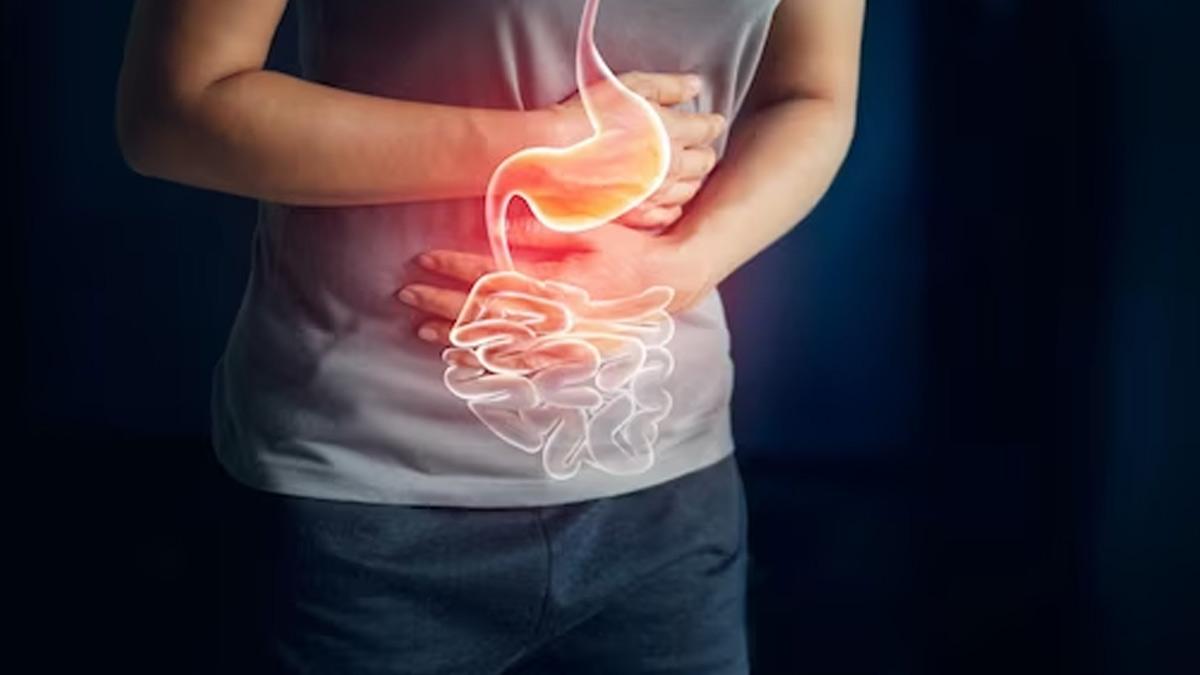
Every other gastrointestinal problem can cause stomach pain, which is why it can be difficult to diagnose the condition on your own.
A visit to the doctor can help identify the underlying cause and relieve the symptoms associated with it. The same goes for gastritis and gastroenteritis. Many people confuse the two not just because of the name but also due to their overlapping symptoms. However, it is important to know that they are two completely different conditions that require different sets of treatments.
Table of Content:-
Speaking with the OnlyMyHealth team, Dr Manoj Gupta, Head of Liver Transplant and Surgical Gastroenterology, PSRI Hospital, New Delhi, helps differentiate between the two conditions and shares effective treatment approaches for both.
Also Read: Can H. Pylori Increase The Risk Of Stomach Cancer? Expert Explains
What Is Gastroenteritis?

Gastroenteritis is an inflammation of your stomach and intestines, often caused by a virus or bacteria, with a higher prevalence attributed to viruses such as norovirus, rotavirus, adenovirus, and others. Research defines it as a diarrheal disease characterised by an increase in bowel movement frequency with or without vomiting, fever, and abdominal pain.
Globally, acute gastroenteritis affects about 10.3 lakh deaths every year, as per a study published in Clinical Infectious Diseases.
It leads to unpleasant symptoms like diarrhoea, vomiting, and abdominal cramps, with dehydration being a common concern as well. While discomforting, gastroenteritis usually clears up on its own within a week, provided you stay hydrated and avoid certain foods.
What Is Gastritis?
Gastritis is the inflammation of the lining of your stomach. It can be both acute and chronic and usually occurs due to an infection with bacteria like H. pylori, excessive alcohol use, certain medications, or even stress.
According to StatPearls Publishing, chronic atrophic gastritis affects approximately 25% of the global general population. The rate of risk is about 2.4 times higher in individuals infected with H. pylori.
Symptoms usually include stomach pain, nausea, vomiting, feeling full after eating very little, and even indigestion.
How To Differentiate Between The Two?

The signs and symptoms of both acute gastritis and gastroenteritis can overlap, says Dr Gupta.
“In both cases, people can experience belly pain, vomiting, and discomfort,” he notes.
However, gastroenteritis tends to reveal broader signs, according to the expert. It causes more severe stomach pain, accompanied by fever, vomiting, and loose stools.
Dr Gupta reveals that the main difference between gastroenteritis and gastritis is the area of the digestive system they affect. While gastritis typically involves an infection in the stomach itself, causing inflammation and sometimes increased acid production, gastroenteritis, on the other hand, affects the entire gastrointestinal (GI) tract, including the stomach, intestines, and sometimes the large intestine.
Moreover, gastritis is generally related to lifestyle factors. It's normally found in people who are overweight, diabetic, or have thyroid troubles. It is also prevalent among people who consume a variety of highly spicy, oily, and fried foods, coupled with a lack of physical activity. On the other hand, cute gastroenteritis might result from eating toxic materials like alcohol or certain drugs.
Also Read: 5 Tests That Require You To Be Empty Stomach
Treatment Approach

According to Dr Gupta, the treatment methods for both conditions are pretty much the same when they are caused by an infection.
However, when it comes to gastritis brought about by lifestyle factors, modifications in your lifestyle play a key role in restoration, he says, adding that it involves increasing fluid intake, taking certain medicines like proton pump inhibitors, and incorporating normal exercise into your daily routine.
Dietary changes such as adopting a balanced diet, avoiding harmful substances like alcohol and smoking, opting for smaller and more frequent meals, and steering clear of spicy and oily foods also play a vital role.
“In cases of acute gastroenteritis, the remedy goes beyond simply antibiotics and anti-inflammatory capsules. It also involves ensuring good enough fluid consumption and restoring electrolyte balance to deal with dehydration and electrolyte imbalances,” he adds.
Conclusion
Gastritis and gastroenteritis are both digestive issues that cause pain and distress. However, they’re both different conditions that target different parts of your digestive system. Gastritis is an inflammation of the stomach lining itself, commonly caused by an infection, medication, or spicy food. However, gastroenteritis is more like a stomach infection, which inflames both your stomach and intestines, often due to a virus or bacteria. This leads to a wider range of symptoms, including diarrhoea along with the nausea and vomiting you might see with gastritis. It is important to understand the underlying causes of your symptoms in order to receive appropriate treatment. Visit a gastroenterologist to get an accurate diagnosis and timely treatment.
How we keep this article up to date:
We work with experts and keep a close eye on the latest in health and wellness. Whenever there is a new research or helpful information, we update our articles with accurate and useful advice.
Current Version